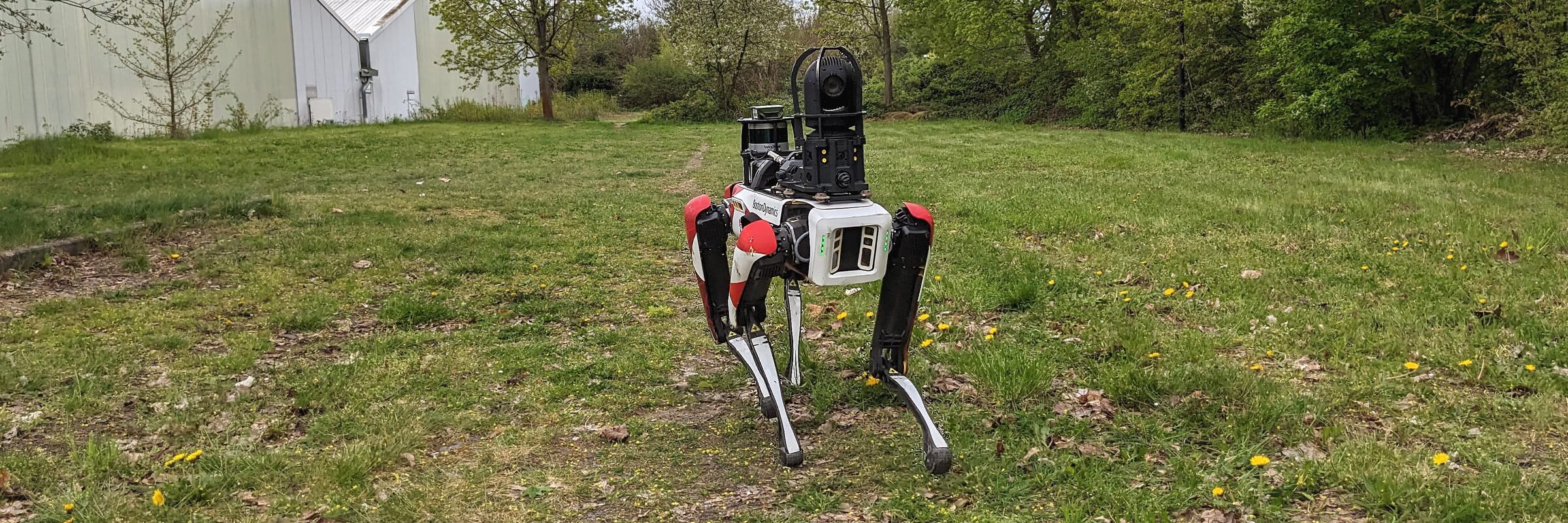
Robots go green
Intelligent robot systems make guard and property protection energy-efficient and sustainable
However, intelligent robot systems not only mean more reliability and efficiency for the customer, but also noticeable energy savings and thus more sustainability. This is because robot-supported safety solutions enable seamless monitoring with low energy consumption at the same time.
The energy savings are particularly noticeable in the surveillance of large areas. Labour-intensive activities such as manned patrols and inspections can be taken over by walking robots or networked surveillance drones, which work very efficiently and error-free and consume only a fraction of the energy. Thanks to lightweight construction and economical drive and control technology, modern robots are also no longer power guzzlers. Moreover, robots do not need heated rooms, floodlights or large vehicles to do their work.
The robot always stays in place and does not consume energy when it is not in use. On the other hand, security, inspection and reception staff have to travel to and from work every day, which is very energy-intensive.
Proactive environmental protection
The use of robots not only leads to remarkable energy savings. Rather, the buzzword “anticipatory environmental protection” takes on a new meaning.
Robots have a wide range of measurement and detection capabilities and can identify hazards to humans and the environment in advance. Potential environmental hazards can thus be detected and avoided in good time. For example, in industrial plants there are many different environmental changes that can indicate potential safety problems, such as leaking water, gas leaks, open doors and much more. By using precise sensors, such weak and dangerous points can be reliably detected and eliminated in time.
Permanently installed sensors are usually limited to monitoring a single factor, whereas networked robot systems monitor all important sources of error and report measurement data to the control centre in real time. This further reduces the probability of malfunctions and environmentally damaging events.
Error prevention saves resources
The error rate with robot-assisted monitoring solutions is demonstrably zero. This eliminates time-consuming and costly follow-up activities and corrective measures. This is not just a matter of replacing people with machines. Rather, it is about intelligent security concepts consisting of trained personnel, modern technology and individual advice. True to the motto: everyone does what they do best. Networked robots can monitor and measure more precisely and efficiently. Qualified guards, on the other hand, can better assess situations and people and make balanced decisions.
Economic and cultural leadership
The use of intelligent robot technology also has a guiding function in terms of economic culture. Those who successfully rely on collaborative robots and integrated security solutions at an early stage become pioneers and role models for other companies. The more companies implement the digital transformation in property security as well, the greater the contribution to an emission-free and climate-friendly economy.
Security Robotics Development & Solutions GmbH, based in Berlin, is dedicated to the continuous and consistent development of innovative and sustainable security solutions. From the all-terrain robot to the charming reception robot to the surveillance drone, there is a suitable solution for all areas of application.
Security Robotics thus helps customers from industry, trade and administration to develop a robust and energy-efficient overall system.